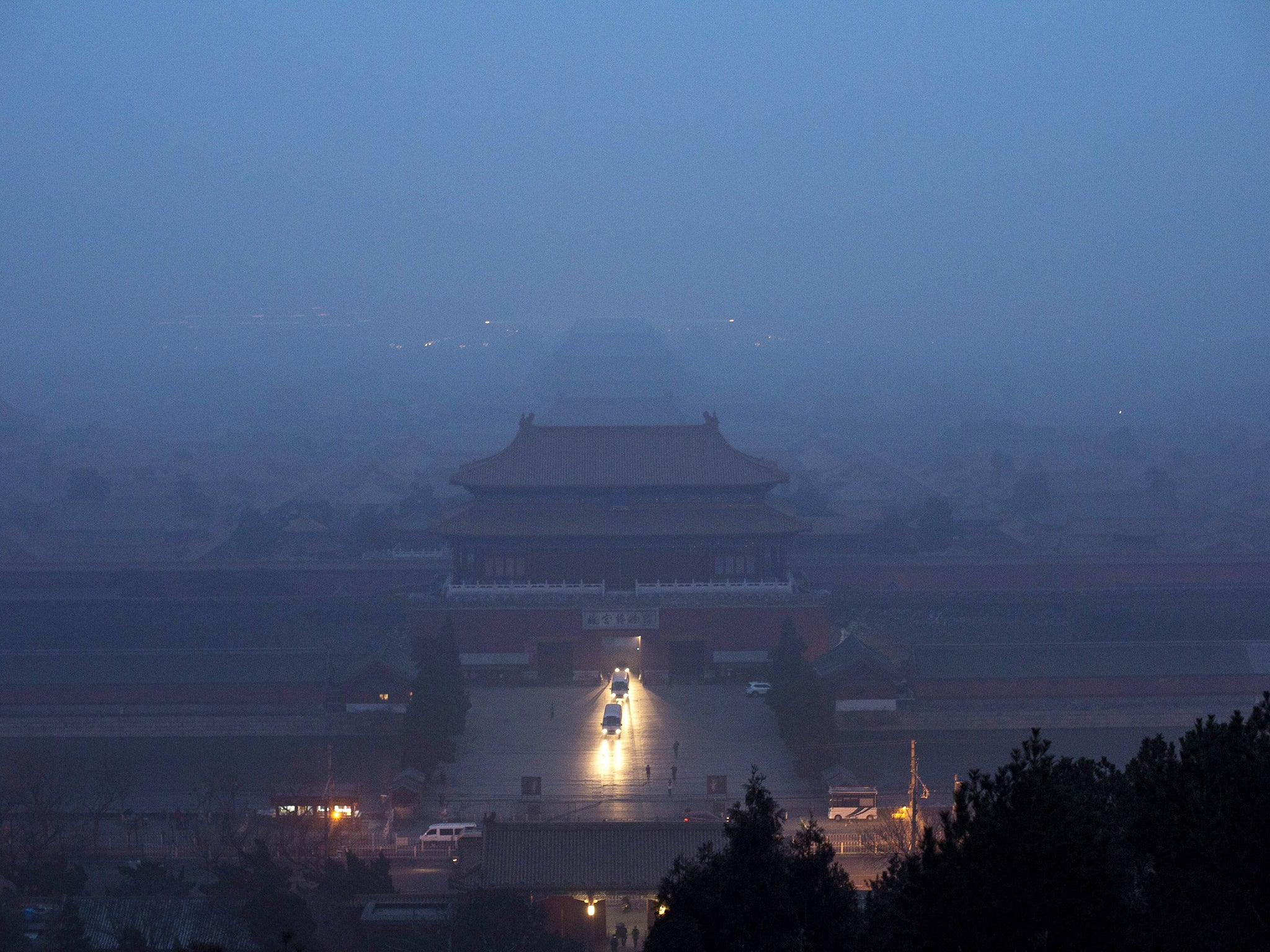Chinese 'airpocalypse' affects half-a-billion people as smog crisis worsens
Pollution levels are six times higher than the World Health Organisation guidelines, Greenpeace says

Residents living in 24 cities across north-east China have been told not to leave their homes after thick grey fog engulfed the region.
The build up of the most severe episode of poisonous smog in a year has prompted a red alert warning, triggering the closure of schools and restrictions on road traffic.
Some 460 million people have been affected by pollution levels that environmental group Greenpeace claimed were six times higher than the World Health Organisation's guideline levels.
China declared a “war on pollution” in 2014 amid concern its heavy industrial past was tarnishing its global reputation and holding back its future development
But it has struggled to reverse the damage done by decades of breakneck economic growth, much of it based on the coal-burning power sector.
The smog – which has shrouded the area for four days– has grounded more than 300 flights from the country.
The chief executive of the world’s biggest oil exporter was also caught up in the disruption, with his plane prevented from landing in Beijing on Tuesday due to the heavy smog.
Amin Nasser, CEO of the Saudi Arabian oil producer Aramco, was due to attend an event on Saudi culture at Beijing's National Museum.
China’s environment ministry has warned that firms were flouting emergency restrictions.
Some power plants and chemical producers had not scaled back operations in line with new regulations, according to China Environmental News, the official publication of the Ministry of Environmental Protection.
The region affected includes several major cities in the industrial province of Hebei, which surrounds Beijing.
Red alerts are issued when an air quality index (AQI) is forecast to exceed 200 for more than four days in succession, 300 for more than two days or 500 for at least 24 hours.
In Handan, a major steel producer, the 24-hour average AQI at one monitoring station reached a record 780, Greenpeace said.
“The scale of the red alert measures show that the Chinese government is taking air pollution seriously,” said Dong Liansai, a climate and energy campaigner with the group.
“However, the ongoing 'airpocalypse' is further evidence that China must implement far stricter limitations on coal consumption and accelerate the restructuring of the economy away from the heavily polluting sectors,” Mr Dong added.
Pollution alerts have become common in China's northern industrial heartland, especially during winter when energy demand – much of it met by coal – skyrockets.
Official data from the Hebei provincial capital of Shijiazhuang showed average readings of small breathable particles known as PM 2.5, a major components of China's AQI, had risen to 665 micrograms per cubic metre.
The World Health Organisation recommends concentrations of just 10 micrograms.
The government said average PM 2.5 concentrations in the first three quarters of 2016 dropped 8.5 per cent compared with the same period last year, but officials have expressed concern that heavy winter pollution has overshadowed any progress.
China has repeatedly blamed “unfavourable weather” for much of the pollution this month, with high humidity and low wind speeds preventing the dispersal of emissions from coal-fired winter heating plants.
Several lawyers are suing the cities of Beijing and Tianjin and Hebei province for what they say has been their failure to fulfil responsibilities in battling the smog.
In recent days, Beijing has imposed an “odd-even” licence plate restriction in a bid to remove half the vehicles from the roads, but there have been at least 85,000 cases of violations.
The capital has also suspended outdoor operations at more than 3,000 construction sites.
According to forecasts, the pollution will gradually abate with the expected arrival of northerly winds on Thursday.
Reuters contributed to this report
Join our commenting forum
Join thought-provoking conversations, follow other Independent readers and see their replies
Comments